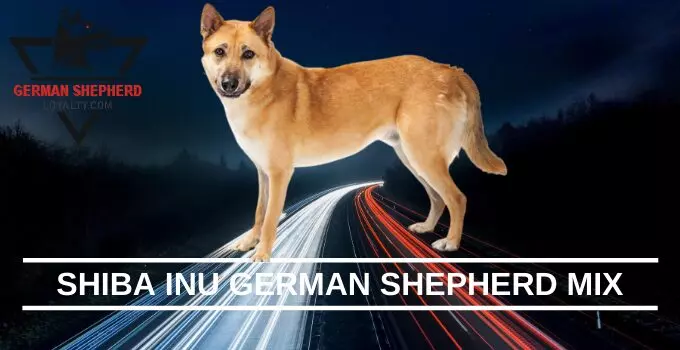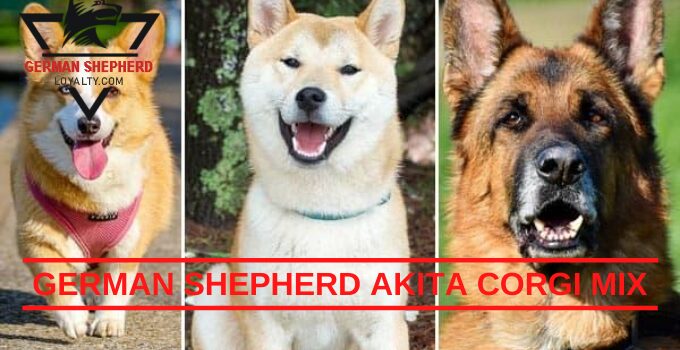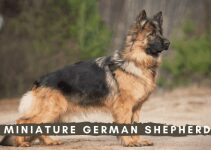The blonde German Shepherd is an extremely unusual coat shade for this prominent buddy pooch.
In fact, in many cases, a puppy may be born with an extremely light layer color that looks blonde to the point where inexperienced breeders could assume the dog is going to be blonde-coated.
Table could not be displayed.But after that, as that young puppy grows up, the layer color can alter considerably. This is why a truly blonde German Shepherd dog as an adult is so rare.
How can a grown-up German Shepherd blonde also acquire a blonde layer? We will speak about pet dog coat shade genes and far more in this article.
Contents
Blonde German Shepherd Puppies
The blonde German Shepherd is not a different breed of Shepherd canine. Rather, when a pet is referred to as a blonde German Shepherd puppies, the referral is simply in relation to the pet’s grown-up layer color.
As the American Kennel Club (AKC) mentions, what is most fascinating regarding a blonde layer on a full-blooded German Shepherd canine is that this shade is out the list of recognized layer shades for the type.
We will certainly yap even more concerning why that remains in this write-up.
See a Blonde German Shepherd Dog
In this short owner-made YouTube video clip, you can obtain a great idea of the layer coloration of the blonde German Shepherd on a totally grown adult pet dog.
You will certainly likewise notice how the coat can appear lighter or darker in particular kinds of illumination. In truth, equally as with human beings there can be lots of shades of shade in the blonde range, this is also real in dogs.
Nonetheless, eventually, a real blonde may cross over in adulthood to become a liver or even a gray, which we will certainly speak even more regarding here next.
How Could a German Shepherd Dog Inherit a Blonde Coat?
Because blonde practically is not acknowledged as a coat shade for German Shepherd grown-up pet dogs, exactly how in the world could a GSD also mature to be blonde?
This inquiry catapults us right into the mystery of the canine genome as well as pet color genes.
As VCA Animal Hospitals clarifies, pet dog coat shade genes actually begin rather basic.
There are 2 primary pigments that add to developing a pet’s adult layer color. Those 2 pigments are eumelanin and also phaeomelanin.
Eumelanin is the standard black pigment. Phaeomelanin is the standard red pigment.
Appears very easy sufficient, right?
This is specifically where things begin to obtain more challenging. Due to the fact that there are lots of various other genes that can influence or act upon eumelanin as well as phaeomelanin to produce different shade tones and color schemes.
Eumelanin in German Shepherd Dog Coats
Take standard black, for example. Eumelanin in its pure kind is going to be dark black. Yet eumelanin can be transformed if an additional gene transforms it.
Liver German Shepherd coat
Basic black may then end up being liver, a pale brownish shade– as well as one that might easily be mistaken for blonde. As a matter of fact, the liver is among the AKC-recognized and also licensed layer colors for the German Shepherd canine.
Sable German Shepherd coat
Basic black could additionally become sable, which is a pattern that includes dark or black pointers at the ends of the hairs. Sable is an AKC-recognized and licensed coat pattern for adult German Shepherd purebred pet dogs.
On the Pedigree Database individual forum, you can see some great photos of German Shepherd pups with blonde coats that ultimately grew up to have the sable layer color scheme.
Agouti German Shepherd coat
As JMA Design Frankenhaus German Shepherd dog breeder points out, some GSD reproducing publications do refer to agouti as a possible layer color pattern for the German Shepherd pet dog.
Agouti did not make the main American Kennel Club (AKC) breed layer shade listing, however.
Agouti is not simply one color pattern, either. It is sometimes described as “wolf shade” and also wolves’ layers do not all look the same. Yet they mostly all have the very same standard layer with the dark hair pointers as well as lighter shade closer right into the wolf’s body.
One feasible coloration that might originate from the agouti variants– 6 in all– is gold. But below, golden occurs since the puppy is in fact sable or extremely light grey and the layer merely lightens to the point where it looks blonde.
Phaeomelanin in German Shepherd Dog Coats
When it comes to fundamental red, it is in fact this shade spectrum that can lighten to produce a standard blonde coat color.
As Dog Coat Colour Genetics explains, phaeomelanin can range all the way from an extremely light gold or tan completely as much as a deep burnished red.
While red is an AKC-recognized and registered part of the black, as well as red bicolor coat pattern for blonde German Shepherd dogs, red by itself, is absent on that listing.
Tan is another acknowledged additional color in the black as well as tan coat pattern for full-blooded grown-up German Shepherd dogs, yet tan on its own is absent on that list.
Now, you may fairly really be asking yourself exactly how it might even be possible for a blonde German Shepherd adult dog to exist.
Allow’s discover.
German Shepherd Puppies Often Change Coat Colors
One huge trick that individuals that are brand-new to dog breeding typically do not know is this: lots of puppies will be born with one coat color as well as mature to have a different layer color.
In many cases, such as with the German Shepherd canine breed, that layer shade change from puppyhood to adulthood can be instead remarkable.
As South Florida Shepherds breeder highlights in their photo gallery, often the color modification can also be rather refined. It really depends on the individual young puppy’s genetics.
Deciphering this secret begins with understanding that pups do not maintain their puppy coat when they grow up. In fact, this shift from puppy coat to an adult canine layer can start as very early as 6 months of age!
As the BirchBark Foundation rescue organization lays out, there are a number of elements that can affect whether a puppy’s coat will alter the color and also just how much it may transform.
In addition to canine genes, which are the principal driving element, an adult German Shepherd canine’s layer shade might be affected by diet plan, medications, total health, access to natural sunlight, skin conditions, and other variables as well.
What Happens to the Coat When a GSD Puppy Grows Up?
When a pup begins to change from a young puppy layer to the grown-up canine coat, the first thing that happens is that the puppy coat starts to befall. Here, this procedure is like how the primary teeth fall out as well as the grown-up teeth grow in behind them.
The single-layer pup coat may fall out in phases as it is steadily replaced by the double-layer grown-up German Shepherd pet dog coat. Not all pet dog types have a dual-layer coat, however, a lot of German Shepherd pet dogs (the long layer kind excepting) do have this layer.
The internal coat layer is normally a strong color. It is barely visible because it is covered by the coarser, much longer outer coat layer. The undercoat just has one objective: to maintain the dog cozy.
The outer layer of the GSD layer, on the other hand, has lots of jobs. It needs to secure the canine from wet, chilly, sunburn, pests, abrasions, injuries, as well as more.
The external layer may be a solid color, a bi-color (two-color pattern), or a multi-color pattern such as sable.
Experienced dog breeders are frequently able to anticipate with a wonderful level of certainty what layer shade a GSD pup will mature to present. Nonetheless, since canine genes are so complex, even the most knowledgeable dog breeders can sometimes be shocked.
This is precisely what can happen when a blonde German Shepherd appears!
How Does a Blonde German Shepherd Coat Even Happen?
There are numerous possibilities that can end up leading to a blonde German Shepherd or at the very least a blonde-appearing German Shepherd.
Remember when we talked about just how the phaeomelanin shade pigment can look in several means depending on just how various other genetics may communicate with it?
Phaeomelanin can lighten to the point where it is an extremely light blonde that can be mistaken for white
A blonde GSD coat may actually be white
White coats are created by the absence of shade pigment entirely. However, in certain sorts of light, a blonde coat can appear white as well as the other way around.
So it might simply be that the dog in fact has a white coat. While white is one more unusual and uncommon color in German Shepherds, unlike blonde, white is also a color that is recognized in the GSD type standard.
A blonde GSD may actually be rare but possible
At one point, nearly every pure-blooded dog type we identify and also love today was when a crossbreed or mixed-breed dog.
Full-blooded canine types are established by strategic crossbreeding.
Like the German Shepherd Dog Club of America mentions, when it comes to the German Shepherd does, a previous German mounties policeman named Captain Max von Stephanitz made use of a pet of unidentified beginning that had believed wolf-dog genetics to create the breed
Along the road, the Captain periodically crossed his brand-new arising breed with other German herding canines. It is fairly possible that several of these other dog types may have lugged the genes for a blonde coat.
Due to the fact that the human understanding of the full canine genome is still quite young, as well as since documents of the other rounding up dogs made use of by Captain von Stephanitz leaves some questions, it is impossible to say that there is no blonde pet dog in the type’s background.
A blonde GSD is actually a hybrid or mixed dog breed
Hybrid pet breeding is becoming rather popular today as even more dog breeders take actions to create new pet types. One day, some of these hybrid pet dog breeds might become registered full-blooded breeds in their very own right.
Yet up until then, it is really essential to find out as long as you can around a canine breeder’s pedigree and procedure prior to you make a lifetime commitment to a GSD puppy.
There are several reasons for this. The initial as well as most immediate is since you wish to stay clear of getting a GSD pup from a pup mill.
Young puppy mills remain in pet reproducing for the earnings as well as do refrain from doing health and wellness testing or provide the moms and dad pets or young puppies with a great diet plan and also nutrition. These pets may not also be legit purebred blonde german shepherd dog.
Speaking of health, the second reason is that German Shepherds blonde do have some heritable health and wellness concerns as well as only a trustworthy dog breeder that tracks their pets’ genetics will certainly have the ability to generate healthy and balanced young puppies devoid of known testable genetic diseases.
The third factor is that if a dog breeder does not track their family tree, you have no way of understanding if your pet is even a real purebred GSD. This is most important if you prepare to show your dog or type German Shepherds yourself.
But it is likewise crucial for the various other factors we simply mentioned right here.
What to Know Before Choosing a Blonde German Shepherd Dog
Now that you have a much deeper understanding of all the sorts of elements that may result in a grown-up blonde German Shepherd layer, you may wonder if it is a good concept to select a blonde GSD.
The reality is, the most effective way to choose a buddy dog is always to collaborate with a reliable, health-focused, responsible pet dog breeder who examines their parent pet sets for all recognized hereditary wellness issues.
This is just how you can make sure your puppy will be born as healthy and balanced as possible.
Coat shade must always be second to health and wellness. As long as your German Shepherd comes from excellent genes, there is nothing to worry about from picking a dog that has a less-common coat shade like the blonde German Shepherd.


